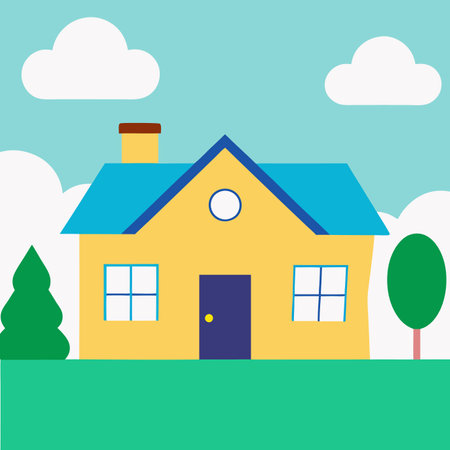1. Assess the Wall Surface
Before you start any painting or tiling project, it’s crucial to assess the condition of your wall. Uneven walls can cause paint to look blotchy or tiles to crack over time, so identifying problem areas early on will help you choose the right fix.
Begin by closely inspecting the wall from different angles under good lighting. You’re looking for signs like bumps, dips, cracks, bulging sections, or peeling plaster. Run your hand over the surface to feel any irregularities that might not be visible.
Common Types of Wall Unevenness
| Type | Description | Possible Causes |
|---|---|---|
| Bumps | Raised areas on the wall surface | Dried paint drips, old adhesive, or previous patchwork |
| Dips | Indentations or sunken spots | Settling foundation or poorly applied drywall compound |
| Cracks | Thin or wide splits in the wall material | Structural movement, drying shrinkage, or temperature changes |
| Bulging Areas | Sections that stick out more than others | Moisture damage, loose drywall tape, or poor installation |
If you notice severe issues like large cracks or moisture damage, it may be wise to consult a professional before proceeding. For minor imperfections, though, there are plenty of DIY solutions that can help level things out before you start painting or tiling.
2. Clean and Prep the Wall
Before you start fixing uneven walls, its essential to clean and prep the surface properly. A clean wall helps materials like joint compound or tile adhesive stick better and ensures a smoother finish.
Start with Surface Cleaning
Use a damp cloth or sponge to wipe down the wall. This removes dirt, dust, and any loose debris that could interfere with repairs. For tougher grime, mix mild dish soap with warm water and gently scrub the area.
Check for Mold or Mildew
If you notice dark spots or a musty smell, you might be dealing with mold or mildew. Use a mixture of one part bleach to three parts water to clean these areas. Let it sit for a few minutes before scrubbing, then rinse thoroughly and allow the wall to dry completely.
Cleaning Checklist
| Task | Tools Needed |
|---|---|
| Remove loose dust and dirt | Damp cloth or sponge |
| Tackle grease or grime | Mild soap and warm water |
| Treat mold or mildew | Bleach solution (1:3 ratio), scrub brush |
| Dry the wall thoroughly | Towel or fan for air drying |
Let It Dry Completely
A dry surface is key before applying any wall repair materials. Use fans or open windows to speed up drying time if necessary. If moisture remains trapped under repair layers, it can cause peeling or bubbling later on.

3. Use Joint Compound or Spackle for Minor Imperfections
If your wall has small dents, hairline cracks, or shallow uneven spots, you don’t need to go overboard with repairs. A simple way to fix these minor issues is by using joint compound (also known as drywall mud) or spackle. These products are easy to apply and ideal for prepping the surface before painting or tiling.
What’s the Difference Between Joint Compound and Spackle?
| Product | Best For | Drying Time | Texture |
|---|---|---|---|
| Joint Compound | Larger areas, skim coating | Longer (up to 24 hours) | Smoother, easier to sand |
| Spackle | Small holes and dents | Quick drying (as little as 30 minutes) | Thicker, dries harder |
How to Apply Joint Compound or Spackle
- Clean the surface: Make sure the area is free of dust and loose debris.
- Apply the product: Use a putty knife to spread a thin layer of joint compound or spackle over the imperfection.
- Smooth it out: Feather the edges so it blends into the surrounding wall.
- Let it dry: Follow the manufacturer’s instructions for drying time.
- Sand smooth: Once dry, sand the patched area lightly until its flush with the wall.
Pro Tip:
If youre dealing with multiple small imperfections across a large area, consider applying a skim coat—a thin layer of joint compound over the entire surface—to create a more uniform finish.
Tools You’ll Need:
- Putty knife or drywall knife
- Sanding block or sanding sponge (medium to fine grit)
- Dust mask (for sanding)
- Damp cloth (for cleaning up dust)
Taking this step helps ensure that paint adheres smoothly and tiles lay flat without gaps or bulges.
4. Apply a Leveling Compound for Larger Surface Irregularities
If your wall has more noticeable bumps, dips, or waves, using a wall leveling compound is the best way to create a flat surface before painting or tiling. This method is especially useful when the imperfections are too deep or widespread for simple spackling or patching.
What Is a Wall Leveling Compound?
A wall leveling compound—also known as skim coat or joint compound—is a thick paste designed to smooth out uneven surfaces. It can be applied over drywall, plaster, or even masonry walls to achieve a uniform finish.
Steps to Apply Wall Leveling Compound
- Prep the Wall: Clean the surface by removing dust, grease, and any loose paint. Lightly sand rough areas if needed.
- Mix the Compound: Follow the manufacturer’s instructions to mix the compound until it reaches a smooth, spreadable consistency.
- Trowel It On: Use a wide drywall knife or trowel to apply the compound. Spread it across low spots and uneven areas using firm, even pressure.
- Smooth and Let Dry: Feather out the edges and allow the compound to dry completely. Dry time can vary based on product and humidity levels.
- Sand Smooth: Once dry, sand with fine-grit sandpaper until the surface feels even to the touch.
- Prime Before Painting or Tiling: Apply a primer to seal the surface and improve adhesion for paint or tile adhesive.
When Should You Use Leveling Compound?
| Surface Issue | Recommended Fix |
|---|---|
| Tiny nail holes or hairline cracks | Spackling paste |
| Slight dents or shallow unevenness | Patching compound |
| Larger dips, bulges, or wide uneven patches | Wall leveling compound |
Pro Tip:
If youre planning to tile over the wall, make sure its as level as possible—especially for larger tiles. Even slight bumps can cause tiles to sit unevenly or crack over time.
5. Install Wall Panels or Backer Board as an Alternative
If your wall is too uneven, cracked, or damaged for simple fixes like joint compound or skim coating, installing a new surface over it might be the best solution. In these cases, using drywall sheets, cement backer boards, or decorative wall panels can help create a smooth and stable base for painting or tiling.
When to Choose This Method
This approach is ideal when:
- The wall has large dents, deep cracks, or bulges that are difficult to repair with compound alone
- The surface is too unstable or damaged to hold paint or tile properly
- You want a fast and efficient way to get a flat surface without extensive patching work
Types of Materials You Can Use
| Material | Best For | Benefits |
|---|---|---|
| Drywall (Sheetrock) | General wall resurfacing before painting | Affordable, widely available, easy to paint over |
| Cement Backer Board | Preparation for tile in bathrooms or kitchens | Moisture-resistant, solid base for tile adhesion |
| Decorative Wall Panels | Aesthetic upgrade while covering imperfections | Comes in various textures and finishes; no need to paint |
Installation Tips
- Measure and cut carefully: Make sure each panel fits snugly against the wall and around fixtures.
- Use appropriate fasteners: Drywall screws for sheetrock, corrosion-resistant screws for backer board.
- Add furring strips if needed: For extremely uneven walls, attach furring strips first to create a level frame before installing panels.
- Tape and mud seams: Especially important for drywall to ensure a seamless look before painting.
Extra Considerations
If youre planning to install heavy tile or stone, make sure your surface material (like cement board) can handle the weight. Also, consider moisture levels—use mold-resistant materials in areas like bathrooms or basements.
6. Prime the Wall Before Painting or Tiling
After youve smoothed out any bumps, filled in holes, and sanded down rough patches on your wall, the next critical step is applying a primer. A good-quality primer acts like a base coat that prepares your wall for whatever comes next—whether thats paint or tile.
Why Priming Is Important
Priming isn’t just an optional extra—it’s essential for a long-lasting finish. Here’s why:
| Benefit | Description |
|---|---|
| Seals the Surface | Primer helps seal porous materials like drywall or joint compound so they don’t absorb too much paint or adhesive. |
| Improves Adhesion | A quality primer gives your paint or tile adhesive something to grip onto, reducing the chances of peeling or slipping later on. |
| Enhances Color Uniformity | If you’re painting, primer creates a consistent surface that helps your final color look even and vibrant. |
| Prevents Stains and Mold | Some primers have stain-blocking or mold-resistant properties, which can be helpful in kitchens and bathrooms. |
Choosing the Right Primer
The type of primer you need depends on your wall surface and what you plan to put over it:
- Drywall: Use a water-based latex primer for new drywall surfaces.
- Patches or Repairs: Choose a high-build primer that can fill in minor imperfections.
- Masonry or Concrete: Opt for a masonry-specific primer to handle the texture and alkalinity.
- Tiling: Use a bonding primer if youre tiling over painted surfaces or smooth walls to help thinset stick better.
How to Apply Primer Effectively
- Clean the Wall: Make sure the surface is free of dust, grease, and debris.
- Use the Right Tools: A roller works well for large areas, while brushes are great for edges and corners.
- Apply Evenly: Spread the primer evenly across the entire surface. Don’t overload your roller or brush.
- Let It Dry Completely: Most primers dry within 1–4 hours, but always check the manufacturer’s instructions before moving on to paint or tile.
A properly primed wall makes all the difference in how your final project turns out. It helps everything stay in place and look professionally done—so don’t skip this step!


